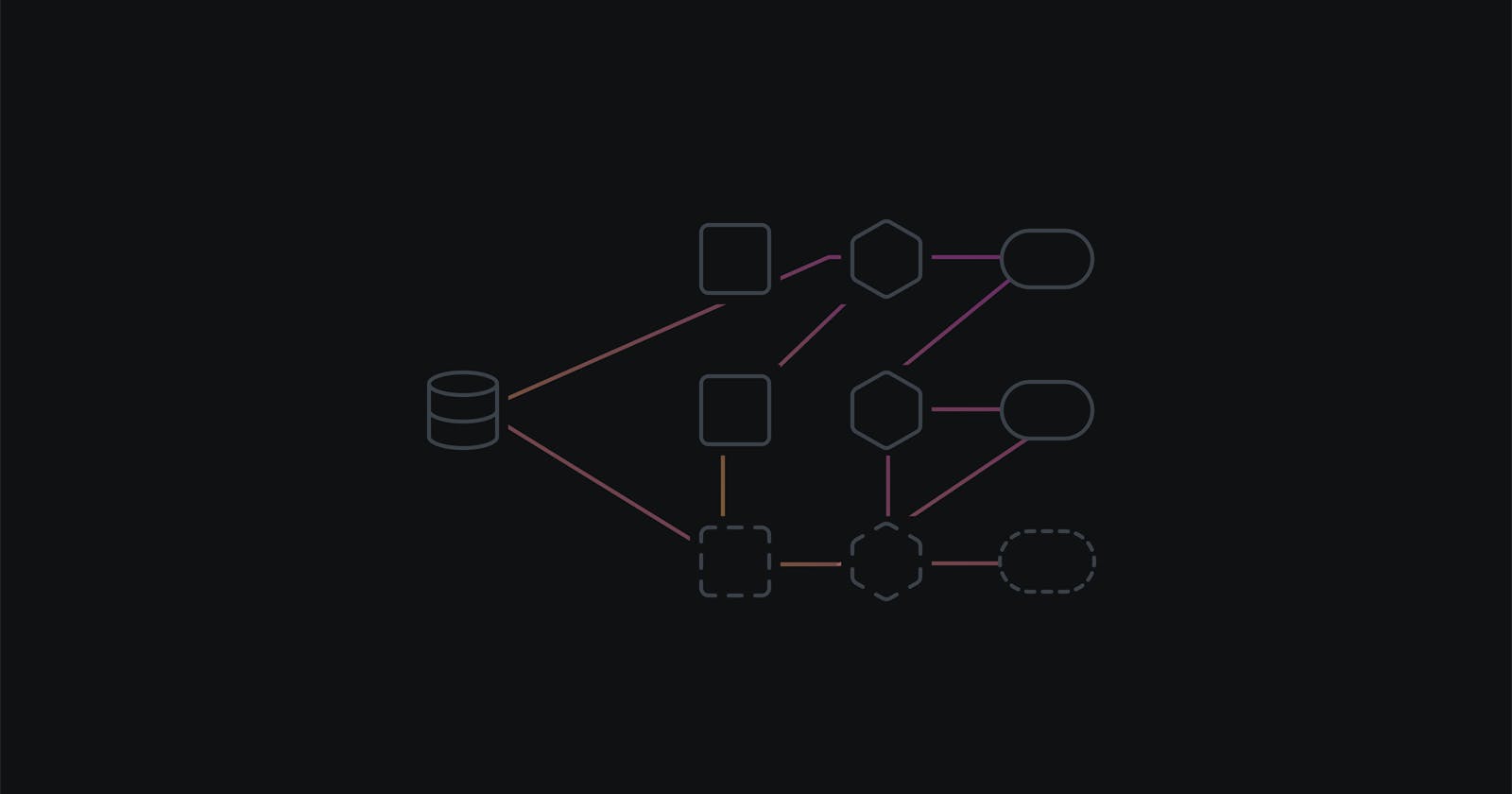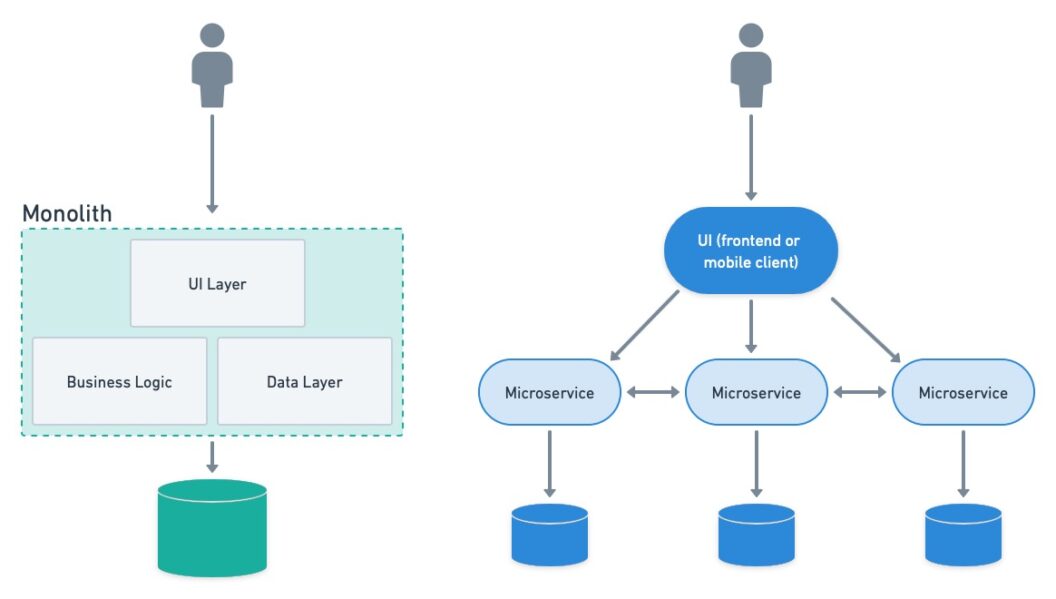Accelerate App Development with Microservices Architecture
Explore Microservices Architecture's role in accelerating Android app development through practical insights and real-world examples
Table of contents
- Understanding Microservices Architecture
- Role of Microservices in Accelerating Mobile App Development
- Implementing Microservices in Android App Development
- Case Studies: Successful Implementation of Microservices Architecture
- Challenges and Solutions in Implementation
- Conclusion
- FAQs!
- What is Microservices Architecture?
- How does Microservices Architecture compare to Monolithic Architecture?
- What are the benefits of Microservices Architecture?
- How has Microservices Architecture been successfully implemented?
- What challenges might I face when implementing Microservices Architecture, and how can I overcome them?
In our fast-paced industry, accelerating mobile app development is crucial. That's where Microservices Architecture comes in. This approach breaks our apps into smaller, manageable pieces, each with its own role. This not only enhances our apps' robustness and scalability but also speeds up our development process.
In this article, we'll explore the benefits of Microservices Architecture, its role in accelerating Android app development, and how to implement it effectively. We'll also discuss real-world examples and potential challenges. Whether you're a seasoned developer or a beginner, this exploration will be enlightening and practical.
Let's get started!
Understanding Microservices Architecture
At its core, Microservices Architecture is an architectural style that structures an application as a collection of small, autonomous services. Each of these services is self-contained and implements a single business capability.
Microservices vs. Monolithic Architecture
In contrast to Monolithic Architecture, where all functionalities are managed in a single codebase, Microservices Architecture breaks down our applications into smaller, independent components. This means we can update, deploy, and scale each microservice independently, leading to more manageable and flexible applications.
| Criteria | Monolithic Architecture | Microservices Architecture |
| Definition | A single-tiered software application in which different components are combined into a single program. | An architectural style that structures an application as a collection of small, autonomous services. |
| Structure | All functionalities are managed in a single codebase. | Applications are broken down into smaller, independent components. |
| Scalability | The entire application needs to be scaled. | Each service can be scaled independently. |
| Development | Changes in one area can have a ripple effect on others. | Teams can work on different services simultaneously, leading to faster development. |
| Deployment | The entire application needs to be deployed at once. | Individual services can be deployed independently. |
| Failure Impact | Failure in one area can impact the entire application. | The failure of one service doesn't directly impact others. |
| Technology Stack | The entire application typically uses a single technology stack. | Different services can use different technology stacks. |
Benefits of Microservices Architecture
There are numerous advantages to using Microservices Architecture in mobile app development:
Diverse Technology Use: It allows for the use of different languages and technologies across services, enabling us to choose the best tool for each job.
Scalability: Each service can be scaled independently based on demand.
Resilience: The failure of one service doesn't directly impact others.
Accelerated Development: Teams can work on different services simultaneously, leading to faster time-to-market.
Role of Microservices in Accelerating Mobile App Development
Now that we have an understanding of what Microservices Architecture is, let's delve into how it plays a pivotal role in accelerating mobile app development.
Flexibility and Productivity
Microservices Architecture allows us to work on different services simultaneously. This means that multiple teams can work on various aspects of the application at the same time, leading to faster development and increased productivity.
// In a microservices architecture, different teams can work on different services.
// For example, Team A can work on the User Service while Team B works on the Payment Service.
TeamA userService = new UserService();
TeamB paymentService = new PaymentService();
Scalability
One of the significant advantages of Microservices Architecture is that each service can be scaled independently. This means that if a particular service experiences high demand, we can scale just that service without affecting the rest of the application.
// If the Payment Service experiences high demand, we can scale it independently.
ScaleService.scale(paymentService);
Resilience
In a Microservices Architecture, the failure of one service doesn't directly impact others. This means that even if one service fails, the rest of the application can continue to function normally.
// If the Payment Service fails, the User Service can continue to function.
try {
paymentService.processPayment();
} catch (ServiceException e) {
userService.continueService();
}
Continuous Deployment and Delivery
Microservices Architecture supports continuous deployment and delivery. This means that we can frequently update and deploy individual services without disrupting the entire application. This leads to faster time-to-market and quicker feedback cycles.
// We can deploy updates to the User Service without disrupting the Payment Service.
DeploymentService.deployUpdate(userService);
Implementing Microservices in Android App Development
Now that we've understood the role of Microservices in accelerating mobile app development, let's move on to the practical part - implementing Microservices in Android app development.
Implementing Microservices in Android app development involves several steps. Here's a simplified guide to get you started:
Analyze Your Infrastructure: Understand your current infrastructure and identify the areas where Microservices can be implemented.
Choose the Right Technologies: Microservices Architecture allows for the use of different languages and technologies across services. Choose the best tool for each job.
Design Your Microservices: Each microservice should be designed to perform a specific function. Keep them small and focused.
// Design a User Service UserService userService = new UserService(); // Design a Payment Service PaymentService paymentService = new PaymentService();Implement API Gateways: API gateways play a crucial role in Microservices Architecture. They act as the entry point for clients, routing requests to the appropriate microservice.
// Implement an API gateway ApiGateway apiGateway = new ApiGateway(); apiGateway.routeRequest(request);Monitor Your System: Implement system monitoring to keep track of your microservices. This will help you identify and address issues promptly.
Case Studies: Successful Implementation of Microservices Architecture
To truly understand the power of Microservices Architecture, let's look at some real-world examples of its successful implementation. Here are a few case studies that highlight the transformative impact of Microservices Architecture:
Netflix
Netflix is a prime example of successful Microservices Architecture implementation. They transitioned from a monolithic architecture to a microservices one to handle their growing customer base and the demand for streaming content. This allowed them to scale their services independently to meet user demand, resulting in improved user experience and reduced downtime.
// Netflix's transition from monolithic to microservices
// Monolithic Architecture
NetflixApp monolithicApp = new NetflixApp();
// Transition to Microservices Architecture
NetflixMicroservice userMicroservice = new UserMicroservice();
NetflixMicroservice contentMicroservice = new ContentMicroservice();
NetflixMicroservice recommendationMicroservice = new RecommendationMicroservice();
Amazon
Amazon is another company that has benefited greatly from Microservices Architecture. They moved away from a monolithic architecture to a microservices one to handle their vast product catalog and customer base. This transition allowed them to scale specific services during high demand periods, such as Black Friday, ensuring smooth user experience.
// Amazon's transition from monolithic to microservices
// Monolithic Architecture
AmazonApp monolithicApp = new AmazonApp();
// Transition to Microservices Architecture
AmazonMicroservice productMicroservice = new ProductMicroservice();
AmazonMicroservice customerMicroservice = new CustomerMicroservice();
AmazonMicroservice orderMicroservice = new OrderMicroservice();
Uber
Uber's transition to Microservices Architecture was instrumental in managing their rapid growth. By breaking down their application into microservices, they were able to scale their services independently in different cities, leading to improved performance and user experience.
// Uber's transition from monolithic to microservices
// Monolithic Architecture
UberApp monolithicApp = new UberApp();
// Transition to Microservices Architecture
UberMicroservice driverMicroservice = new DriverMicroservice();
UberMicroservice riderMicroservice = new RiderMicroservice();
UberMicroservice tripMicroservice = new TripMicroservice();
Challenges and Solutions in Implementation
While Microservices Architecture offers numerous benefits, it's not without its challenges. However, with the right strategies and tools, these challenges can be effectively managed. Let's explore some common challenges and their solutions:
Data Synchronization
Ensuring data consistency across microservices can be challenging. However, strategies like event sourcing and the SAGA design pattern can help maintain data consistency.
// Implementing event sourcing to maintain data consistency
EventSourcingService eventSourcingService = new EventSourcingService();
eventSourcingService.syncDataAcrossMicroservices();
Security
Security is a crucial concern in Microservices Architecture. Tools like API Gateways and security protocols like JWT can help ensure secure communication between services
// Using JWT for secure communication between services
JwtSecurityService jwtSecurityService = new JwtSecurityService();
jwtSecurityService.ensureSecureCommunication();
Service Communication
Microservices need to communicate with each other effectively. Techniques like API Gateways, event-driven platforms like Kafka and RabbitMQ, and Service Mesh can facilitate efficient inter-service communication.
// Using Kafka for event-driven communication between services
KafkaService kafkaService = new KafkaService();
kafkaService.enableEventDrivenCommunication();
Service Discovery
With numerous microservices, discovering and interacting with the right service can be challenging. Service Mesh and API Gateways can aid in effective service discovery.
// Using Service Mesh for service discovery
ServiceMeshService serviceMeshService = new ServiceMeshService();
serviceMeshService.enableServiceDiscovery();
Fault Tolerance
Ensuring that the failure of one service doesn't impact others is crucial. Techniques like the Circuit Breaker pattern can help achieve fault tolerance.
// Implementing the Circuit Breaker pattern for fault tolerance
CircuitBreakerService circuitBreakerService = new CircuitBreakerService();
circuitBreakerService.ensureFaultTolerance();
By understanding these challenges and implementing the suggested solutions, we can effectively leverage the power of Microservices Architecture in our Android app development process.
Conclusion
In conclusion, Microservices Architecture is a transformative approach that accelerates mobile app development. It breaks down applications into manageable services, each handling a single business capability. This offers benefits like increased flexibility, scalability, and resilience, and supports continuous deployment. Successful implementations by Netflix, Amazon, and Uber underscore its effectiveness. While there are challenges, they can be addressed with the right strategies. I hope this article empowers you to leverage Microservices Architecture in your Android app development journey.
Happy coding!
FAQs!
To wrap up our discussion, let's address some frequently asked questions about Microservices Architecture:
What is Microservices Architecture?
Microservices Architecture is an architectural style that structures an application as a collection of small, autonomous services. Each service is self-contained and implements a single business capability.
How does Microservices Architecture compare to Monolithic Architecture?
Unlike Monolithic Architecture, where all functionalities are managed in a single codebase, Microservices Architecture breaks down applications into smaller, independent components. This allows for independent updating, deploying, and scaling of each microservice.
What are the benefits of Microservices Architecture?
Microservices Architecture offers numerous benefits, including increased flexibility and productivity, scalability, resilience, and support for continuous deployment and delivery.
How has Microservices Architecture been successfully implemented?
Companies like Netflix, Amazon, and Uber have successfully implemented Microservices Architecture, demonstrating its effectiveness in accelerating mobile app development and improving scalability and user experience.
What challenges might I face when implementing Microservices Architecture, and how can I overcome them?
Challenges in implementing Microservices Architecture include data management and service coordination. These can be effectively addressed with the right strategies and tools, such as using APIs for service communication and implementing a robust data management strategy.


